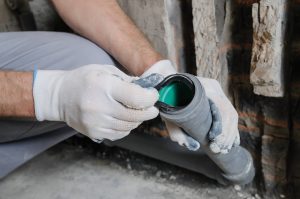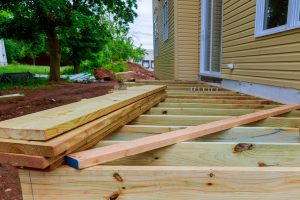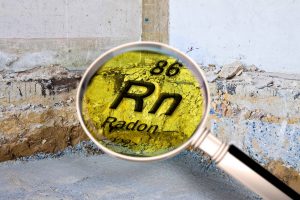6 Surprisingly Expensive Home Repairs You Might Not Expect
Home repairs are expensive, but here are a few that might put a bigger dent in your pocket than you’d expect.
It’s inevitable that something will break or need to be fixed in your home. It’s a part of maintaining a house, but home repairs can be expensive, with the average homeowner spending about $7,000 per year on costs related to their home.
Taking the time to understand how much these repairs cost may set you up for less surprises and help you budget.
Here are a list of common expensive repairs:
- Roof replacement
- Foundational issues
- Water leaks
- Electrical
- Replacing the HVAC system
- Mold
- Termites/pest
Beyond the major repairs that may be inevitable, there are a handful of surprisingly expensive home repairs that may catch you off guard if you’re not prepared.
1. Water and sewer

Your home’s water and sewer lines are connected to the public water and sewage systems. Homeowners are responsible for the pipe that runs underneath their homes. The cost of replacing a broken water or sewage line will run you about $1,000 to $4,500. While this amount is not in the tens of thousands, the more expensive portion will come with the cleanup in the event the water or sewage line is broken.
Repairs often entail digging up a portion of the line and can cost anywhere from $150-$550 per foot. Post repairs, the trenches need to be filled again and the pipes covered—this may cost around $250 per square foot. In the event that the entire water and sewage system needs to be completely replaced, it can run you anywhere from $8,000 to $30,000.
2. Switching to copper pipes

If your house is on the older side, you need to think about switching out the pipes. Many homes that were built in the early 1900s were built with lead pipes, which needs replacement after about 100 years.
Beyond the fact that you don’t want pipes that are over a century old in your home, lead pipes can leak into your drinking water and pose a health hazard. According to the CDC, even low levels of lead can pose health problems such as reproductive issues and increased blood pressure.
Polybutylene pipes, used in the 1970s to 1990s, are known to break, and may also need to be replaced. The repairs for this depend on the age of the house, but for rough estimates, these kinds of replacements may cost around $4,000 to $10,000 (in a 1,500 sq. foot house). This kind of project requires opening up walls and floors, which means you’re also paying for labor costs. Plumbing for new construction costs may run you around $8,000 to $12,000.
3. Replacing a deck

A deck is an added outdoor space and helps improve the overall value of your house, especially if you’re looking to sell. However, decks don’t last forever, and the wood may need to be replaced if it’s rotting or is falling apart. The average cost of replacing an entire deck will cost you around $7,000 to $10,000.
Of course this will depend on various factors such as what kind of wood you use and the size of your backyard and landscaping. If your backyard is steep, for example, it can add to the overall cost.
4. Landscaping

Like many home projects, landscaping can be a strictly DIY renovation to keep costs down. However, if your front or backyard has large, overgrown trees that need professional landscaping, the costs will start to add up. A tree stump removal, alone, for example can cost $300. Landscaping may run you around $3,200 and if you want to build a deck or patio enclosure, it’ll run you $7,000 to $16,000.
Some other costs that may add up as additions in the backyard, include:
- Custom patio covers: $5,000 to $20,000
- Built-in gas fire pits: $5,000 to $15,000
- Built-in barbecues: $10,000 to $30,000
- Landscape lighting: $2,500 to $10,000
- Demolition of patio fixtures, plants, etc: $2,000 to $12,000
- Built-in seating: $3,000 to $15,000
- Trees and plants: $2,500 to $15,000
5. Painting

This is one of the best ways to instantly give your house a facelift without having to break the bank. Depending on the size of your house, however, these costs can easily run you from a few thousand to tens of thousands. The final price of painting will also depend on the type of paint and primer you use.
Professional painters charge $4,000 for labor and materials to paint the outside of a 2,500 sq-ft, two-story home and around $5,500 for the inside. Painters may charge anywhere from $20 to $60 an hour.
Other factors that may run up the cost include last-minute jobs, travel costs, and hefty prep work before painting, such as removing mold or stains.
Here are more some average costs for painting the interior and exterior of different sized homes:
- 1-story 1,000 square feet: $2,500 to $6,000
- 2-story 2,500 square feet: $6,750 to $12,500
- 3-4-story 4,000 square feet: $10,000 to $19,000
6. Radon mitigation

Radon is an odorless, colorless, and tasteless gas that can cause lung cancer. It’s important to have levels checked before buying and selling a house, and the Environmental Protection Agency Environmental Protection Agency encourages all homeowners to test their residences for radon gas concentrations. The cost of a mitigation system may vary according to the home’s design, size, foundation, construction materials, and the local climate. Radon reduction systems average costs nationally are $1,200 with a range from $800 to $1,500 depending on house and market conditions.
Bottom line
The cost of home repairs rest largely on professional labor costs, which can quickly eat into your budget. While some people may choose to go the DIY route to save on costs, it’s also important to consider the time that goes into the repairs, cost of the materials, and potential permits that may be needed.
Some experts suggest saving 2 to 5% of the value of your home for potential home repairs.
If you don’t want to make these repairs and are in the market to sell your home, consider working with Sundae. No repairs or fees necessary.
Ready to Get Started?
Sell as-is. Pay zero fees to Sundae. Move on your time. No repairs, cleanings, or showings.
